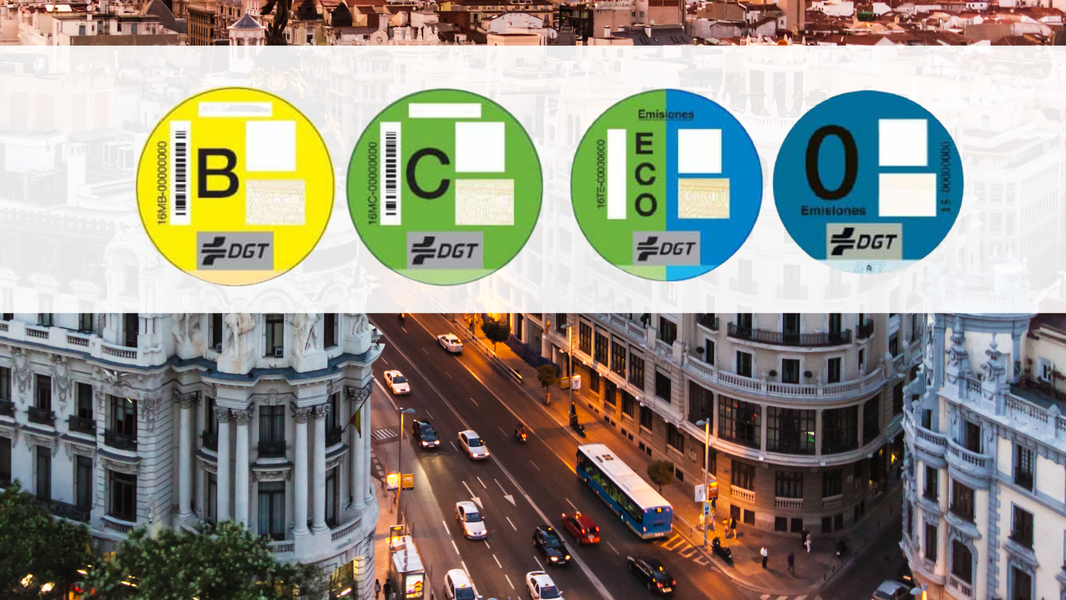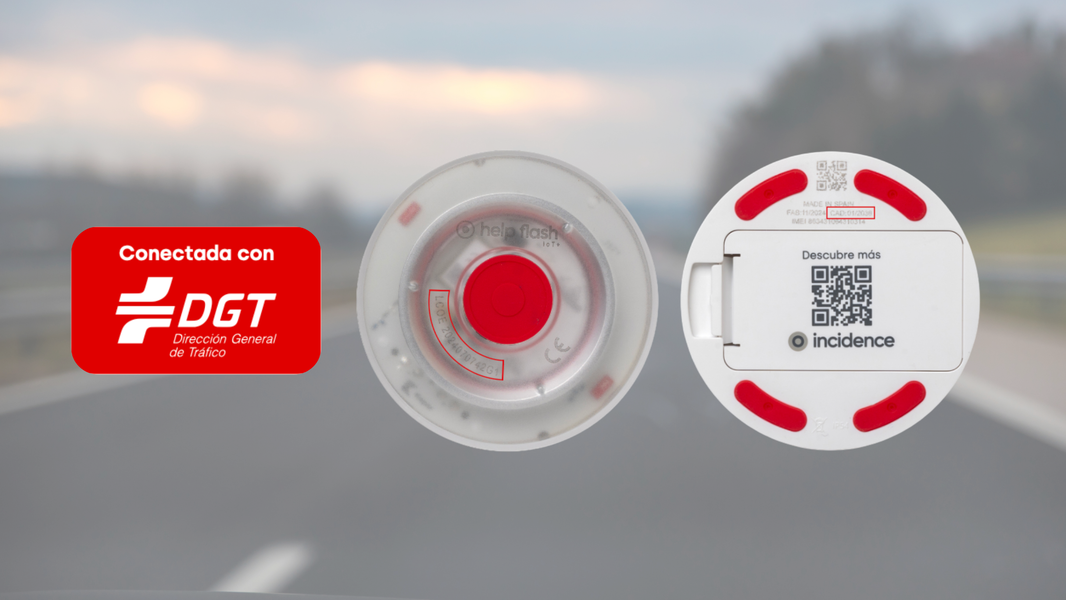To the question of what a beacon sign is , we would say, as a general definition, that beacon signs are essential elements of comprehensive road safety , allowing us to delimit the roadway and indicate how to react in specific situations. An example would be traffic accidents or other incidents related to our vehicles. In these specific cases, it is no longer necessary or mandatory to get out of the vehicle to signal our position. With the new V16 approved beacon with geolocation , you simply extend your arm and place it at the top of the road so that other road users can identify your position.
Thanks to connectivity with the DGT ( Directorate-General for Traffic), all other drivers at that time will be alerted to our situation via variable information panels, their navigation systems, and, in the future, via V27 signs. This way, we minimize the risk of collision or collision .
A road marking sign for vehicles that will be mandatory by law from January 1, 2026 .
We already have a better understanding of what a road marking sign is , but there's more information to help you fully understand what we're talking about. There are temporary and permanent road marking signs, all of which play an important role in communicating and marking limitations and obstacles that may be present on the road.
What are beaconing signals?
Road signs are elements that guide drivers on how to act in various situations . These signs are divided into different types, each with specific functions that contribute to road safety and accident prevention.
Types of beaconing signals
- Vertical traffic signs
- Vertical and horizontal signs
It goes without saying that road markings communicate and transmit essential information about the road they're on, its conditions, and its users. We should all be fully aware of what they're trying to tell us in order to interpret them and act accordingly.
Function of beacon signals
What a beacon sign is is answered by discussing its purpose. Beacon signs are divided into temporary and permanent ones , each with its specific purpose. Temporary signs, such as cones and mobile barriers , alert drivers to temporary situations that require extra caution. On the other hand, permanent signs, such as markers and milestones , permanently mark boundaries and obstacles.
Temporary beaconing signals
- They warn of provisional situations.
- They indicate temporary obstacles or deviations.
- They require immediate attention.
Permanent beaconing signs
- They delimit the roadway in a lasting manner.
- They signal curves and fixed obstacles.
- They remain unchanged over time.
What is a beacon signal: Contexts and situations of use
We already know that in situations of road breakdowns or accidents, road markings are essential to warn other drivers and ensure the safety of occupants. Their proper use can save lives and prevent tragedies on the road.
Our actions to preserve the safety of the vehicle's occupants must follow the following premises :
- Park the vehicle in a safe place, out of the flow of traffic, if possible.
- Place reflective signs at an appropriate distance to warn other drivers.
- Activate the emergency lights and place warning triangles according to current regulations.
- Stay in a safe place off the road, avoiding unnecessary risks, preferably inside your own vehicle.
As we've already mentioned, we can avoid risking our physical safety by not getting out of the vehicle to place the emergency triangles, and instead use the new V16-approved Help Flash beacon with geolocation. Without leaving our seat, we can place the light connected to the DGT (Directorate General of Traffic) on the roof of the vehicle and wait for assistance to arrive.

We're mainly talking about familiar road situations, such as accidents, breakdowns, health problems, or drowsiness, where we can't reach a rest area and are forced to stop our car or motorcycle on the shoulder of the road.
Additional precautions
We mustn't forget that in the event of a breakdown or accident, the safety of the occupants is the priority . Avoid sudden maneuvers, and always notify emergency services if necessary and provide appropriate information. This way, we can avoid further risks.
Common types of beaconing signals
In addition to the new v16 vehicle beacons, we also constantly see disparate road markings . These range from common barriers (fixed or mobile) prohibiting access to a designated area, to directional signs informing drivers of the correct direction of travel (indicating a potential hazard or simply prohibiting entry), to cones, flags, and lights (red or amber, steady or flashing) that can indicate, among other things, that traffic is prohibited on that designated area.
Other markers (circular and flat) appear on roads when it is necessary to mark the edge of the road and its limits with respect to other road elements. Finally, we highlight the common vertex markers (cylindrical in shape to mark two distinct traffic paths) and edge markers, also used to inform drivers of the edges of the road during times of poor visibility (at night).

New v16 beacon signal connected to the DGT
Although we've already given you details about our Help Flash v16 approved beacon with geolocation , here's a summary of the most notable features of this innovative road signaling device:
- These signs, mandatory since 2016, replace traditional triangles in roadside emergency situations.
- The main innovation of the v16 signals is their connectivity with the General Directorate of Traffic, which allows for a faster and more efficient response to road incidents.
- These signs are more visible and effective, contributing to greater protection of road users and safer traffic.
Regulation RD 1030/2022 on the use of emergency triangles and analog light signals
The current regulation RD 1030/2022 , which modifies Royal Decree 159/2021, of March 16, which regulates roadside assistance services, establishes the provisions related to the use of emergency triangles and analog light signals in situations of breakdowns or accidents on the road.
According to this regulation, drivers must use warning triangles appropriately to effectively signal their position and avoid potential collisions with other vehicles.
It also details the requirements that both emergency triangles and analog warning lights must meet, ensuring their visibility and effectiveness in all weather and lighting conditions.
The regulations also specify the corresponding penalties for failure to properly use emergency triangles or analog warning lights, with the aim of encouraging responsible and safe behavior on the part of all drivers.
Conclusions
We have seen that there are various types of road markings that communicate, delimit, and convey vital messages to road users. When asked what a road marking sign is , we must be certain that it is an element that seeks to guide drivers on the proper behavior they should adopt in certain situations that may arise while driving.
Starting in 2026, the use of emergency beacons with geolocation will be mandatory for all drivers. They are safer and more effective for signaling an incident, avoiding risks, and requesting assistance.
If you have any questions or concerns, please leave a comment on the article or contact our team, and we will respond as soon as possible.






